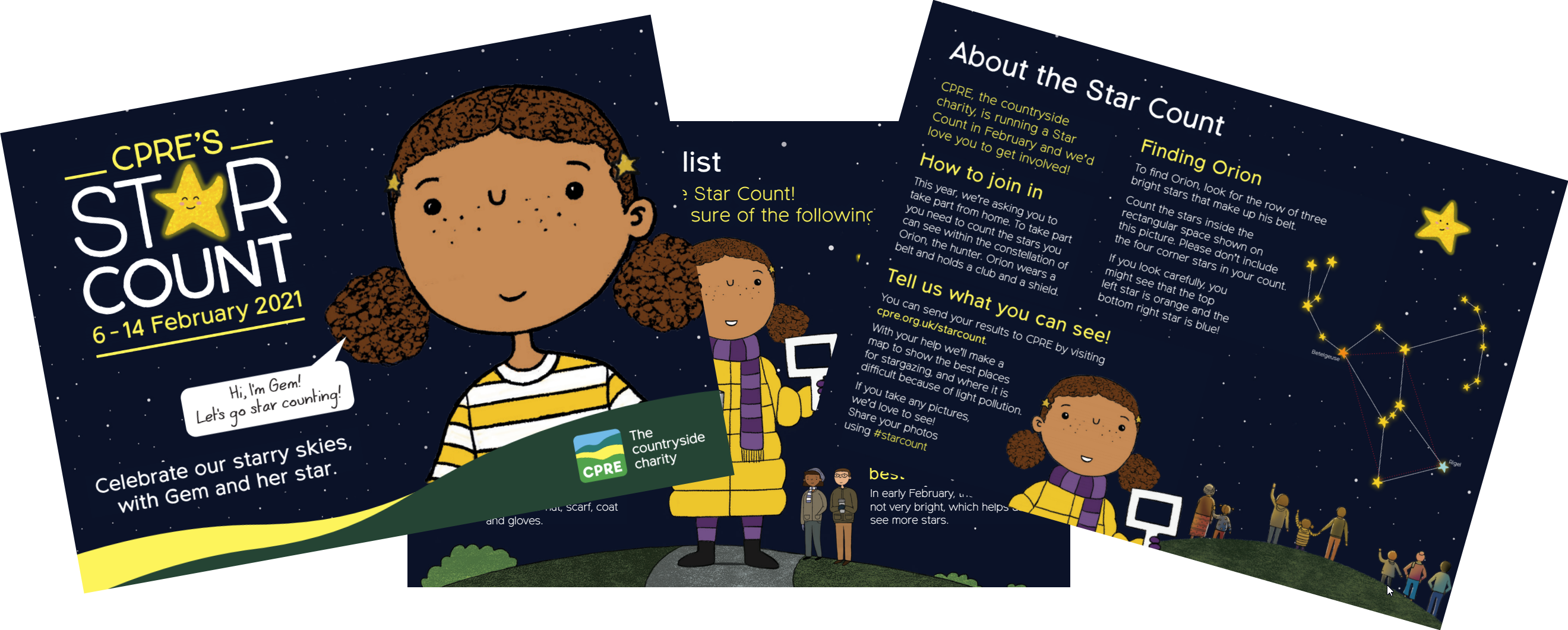The best way to see how many stars we can all see in the sky is… to count them!
This year, CPRE (The Countryside Charity) are asking people to take part from home - from your garden, balcony, doorstep or even bedroom window. Choose a clear night between 6-14 February 2021, look up at the constellation of Orion and record how many stars you can spot.
To help with this, you can download the great free Star Count digital activity pack, which includes a handy Orion view finder - or view the support details online on the CPRE website.

Here are 5 simple steps from CPRE that you can follow to take part in Star Count:
1. Try to pick a clear night for your count, and wait until after 7pm so the sky is really dark. Please do your Star Count from home only. This could be your garden, balcony, doorstep or bedroom window.
2. Turn off all the lights in your home and let your eyes adjust (the longer you wait, the better).
3. Look south (the way satellite dishes point) and find the Orion constellation, with its four corners and three-star 'belt’.
4. Count the number of stars you can see within the rectangle made by the four corner stars. Don’t count the corner stars, but you can count the three stars in the middle – the belt.
5. Make a note of the number of stars seen with the naked eye (not with telescopes or binoculars) and then submit your count to the CPRE website.
Finally, take a look at the interactive map of the findings of the 2,500 brilliant ‘citizen scientists’ who helped with Star Count in 2020.


/Passle/5e74d181703aee0ac08e2add/MediaLibrary/Images/51937a8c3d94740ba8e88e90/2022-02-04-10-12-34-968-61fcfc120c51c30b8ce7f7df.png)
/Passle/5e74d181703aee0ac08e2add/MediaLibrary/Images/51937a8c3d94740ba8e88e90/2021-07-23-09-15-07-389-60fa889b400fb31204c44757.jpg)
/Passle/5e74d181703aee0ac08e2add/MediaLibrary/Images/51937a8c3d94740ba8e88e90/2021-07-19-19-51-46-703-60f5d7d2fac91f0b44278057.jpg)
/Passle/5e74d181703aee0ac08e2add/MediaLibrary/Images/5e74d1c1989b8c0fdca28e2e/2021-06-28-17-11-37-204-60da02c9400fb30ed0d0cee7.jpg)